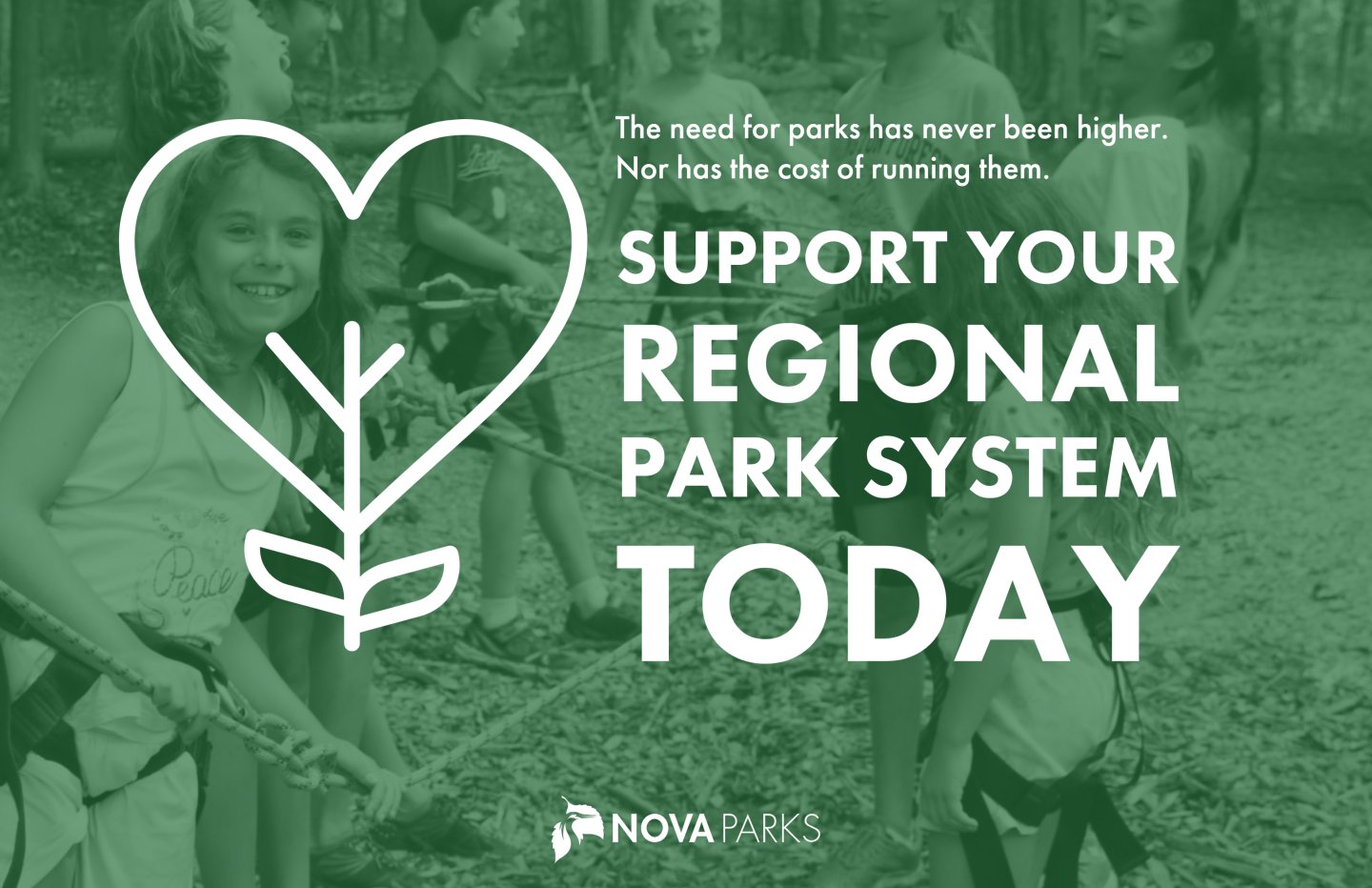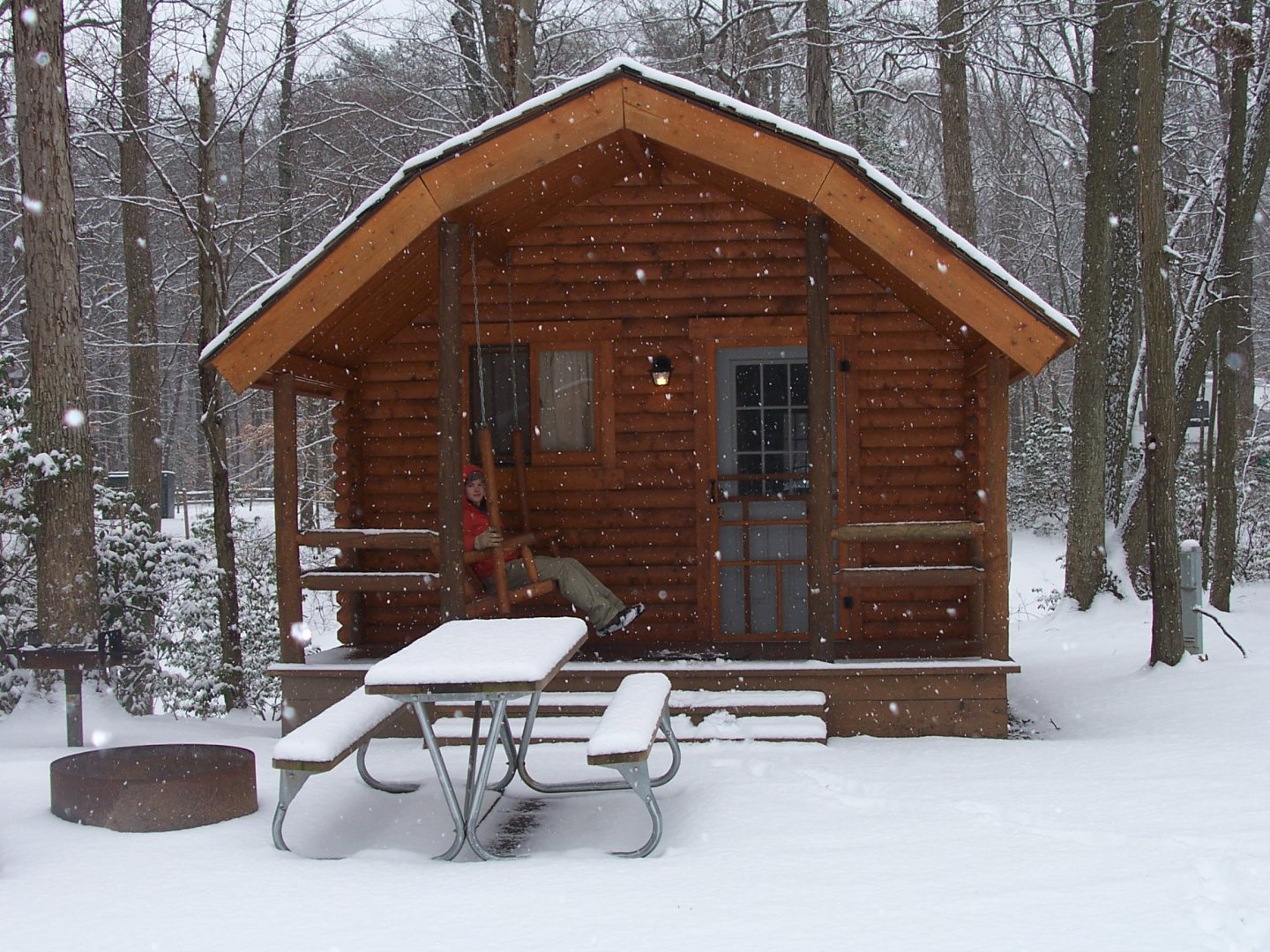Meadowlark Botanical Gardens
History
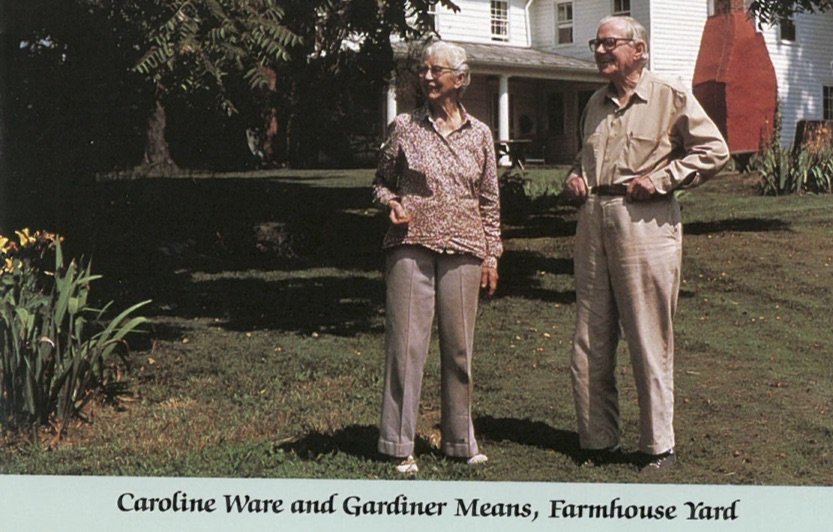
In the summer of 1980, Means and Ware entrusted their cherished 74-acre farm to NOVA Parks, expressing a desire for its enduring natural beauty. NOVA Parks honored their wishes, and acquired an additional 21 acres. The resulting 95-acre site, echoing the scenic Virginia Piedmont, became an ideal location for a unique public garden with captivating topography and panoramic views.
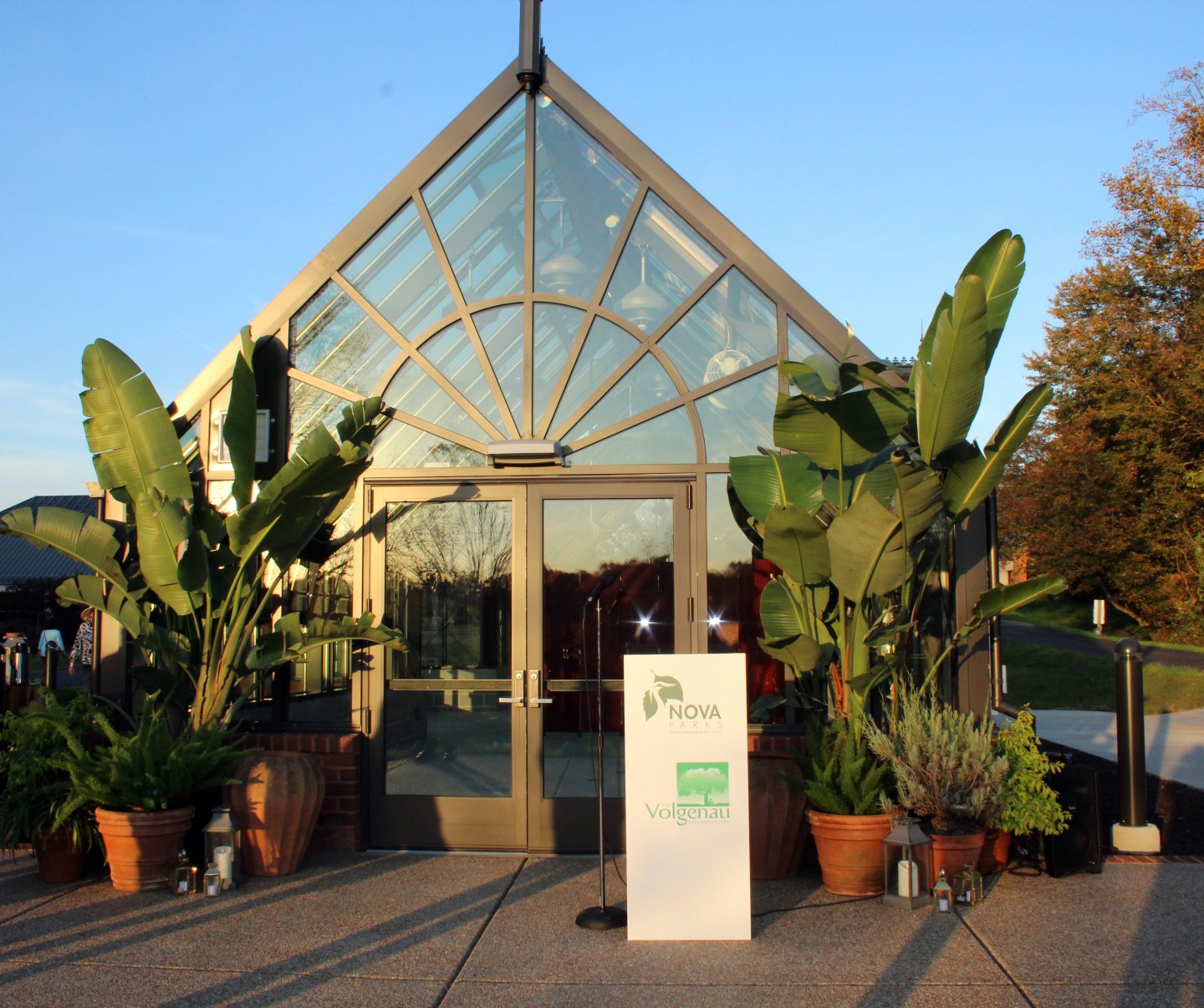
By the mid-80’s, three lakes were added to the largest stream course. Several trails outlined in an early master plan took shape. Collections of Hosta, daylilies, and ornamental cherry trees were planted. Later, an azalea garden, a lilac collection, and a Siberian iris and native tree trail were added. Three gazebos were built in different areas of the garden. Meadowlark opened officially in April 1987 with Means and Ware as the guests of honor. Less than three years later both had passed away, but their vision of a public garden was taking shape.
The Meadowlark Visitor Center opened in 1992, and featured a gift shop, a large fireplace, and high vaulted ceilings. A short time later, the garden received a large donation of dwarf conifers from the private collection of Dr. Albert Paulsen. Perennial, butterfly, herb gardens, and an ornamental grass collection were established by the mid-90’s, concurrent with irrigation expansion. In 1998, The Atrium, an events facility, opened. Built to match the architectural style of the Visitor Center, and attended by an exquisite White Garden, The Atrium rapidly became a premier public garden event venue. In 2000, Washingtonian Magazine voted it among the top three event venues in the Washington metropolitan area. To this day, The Atrium remains one of the most sought-after wedding sites in the Northern Virginia Region.
In 2005, the historic log cabin dating to 1755 was restored, and an exceptional new wooden bridge was built between the islands in Lake Gardiner. Built of seven native hardwoods, the bridge is both curved and arched. A revised master plan is in development, and a taxonomic survey of the collections is in progress. The Visitor Center was remodeled in 2003 to expand exhibit space.
2012 was a leap forward with numerous offerings being brought to the gardens. During the Spring, the Korean Bell Garden opened to the public after numerous years of partnership and planning with the Korean American Cultural Committee. It still stands as a landmark for the relationship shared between the United States and South Korea. In the winter, the gardens offered the first season of the Winter Walk of Lights, a nature themed winter lightshow that continues to be one of the regions most attended winter events.
In 2020, with a large contribution from the Volgenau foundation, the Volgenau conservatory opened to the public hosting an array of Mediterranean plants.
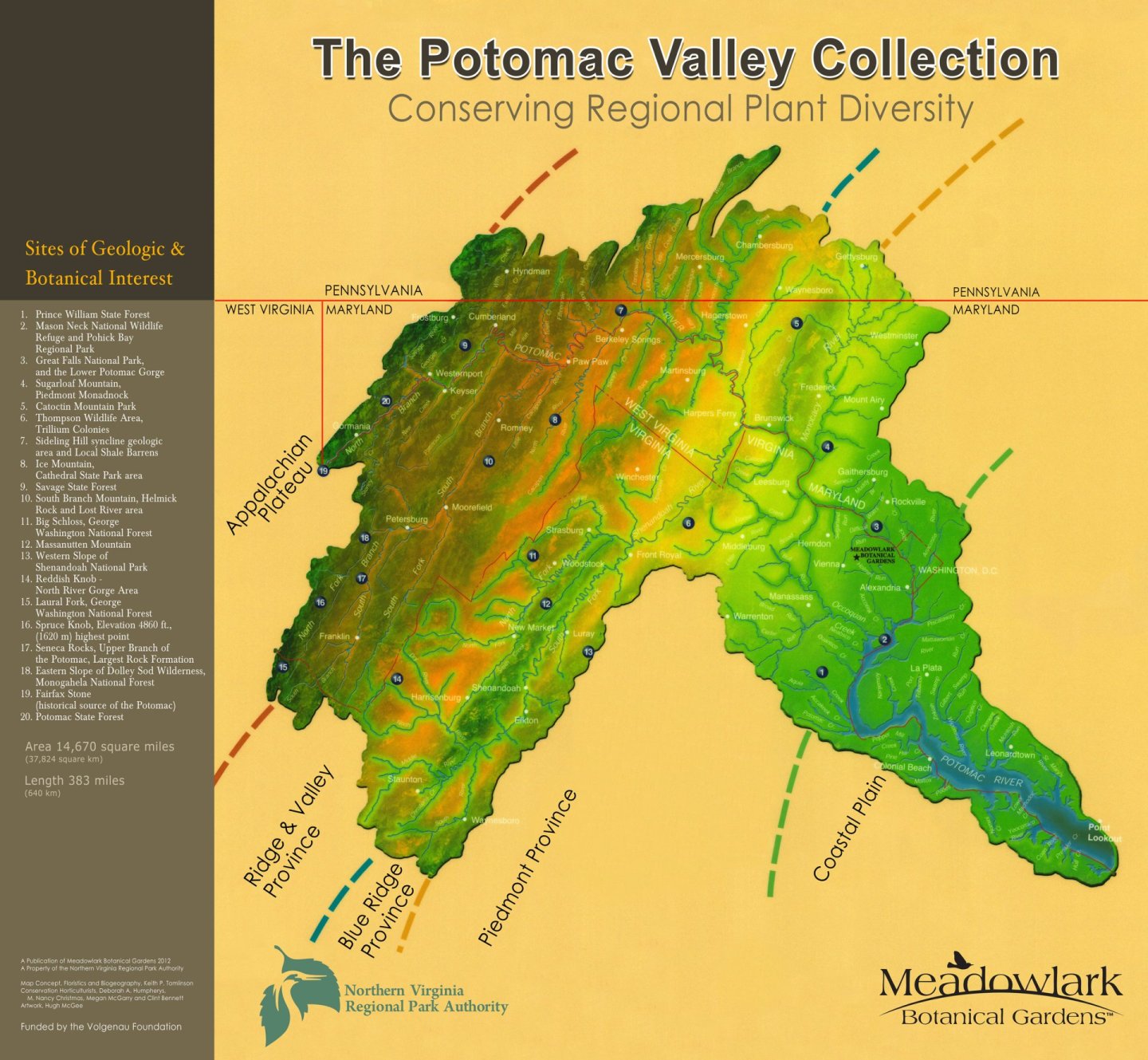
In 1999, Meadowlark launched a regional native plant conservation program aimed at preserving native plants and their habitats through public education. The collection's regional focus is guided by biogeographic factors such as geology, topography, and forest composition, centered around the Potomac River Valley. Known as the Potomac Valley Collection, it plays a vital role in supporting both in situ and ex situ conservation of regional plant diversity, emphasizing regional genotypes and ecotypes. The collection received the Washington, D.C. Academy of Sciences' Biological Sciences Award in 2003.
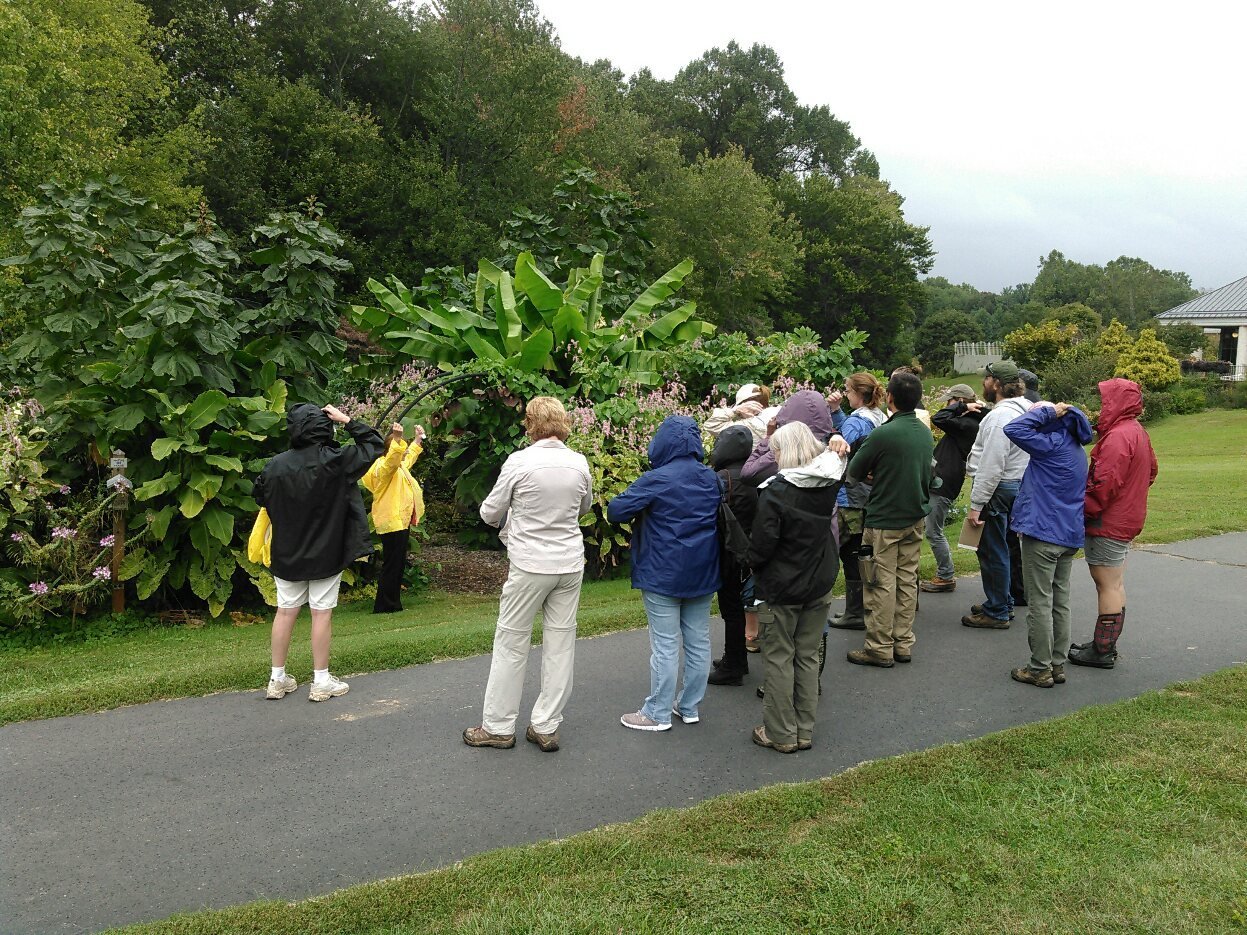
Meadowlark's balanced approach between ornamental and conservation collections extends programmatically with diverse offerings including activities like wildflower hikes, birding, and invasive species discussions. The garden collaborates with universities, community colleges, Smithsonian Associates, garden clubs, schools, community centers, and the U.S. Department of State for training programs.
Interns contribute annually, and the garden serves as a retreat for embassy staff, diplomats, and members of Congress. President Roosevelt's social paradigm inadvertently led to Meadowlark, an environmentalist's legacy, offering aesthetics, conservation, education, and community service to Northern Virginia. Learn about internship opportunities.
Visit the Meadowlark Events page to see all our current offerings.
